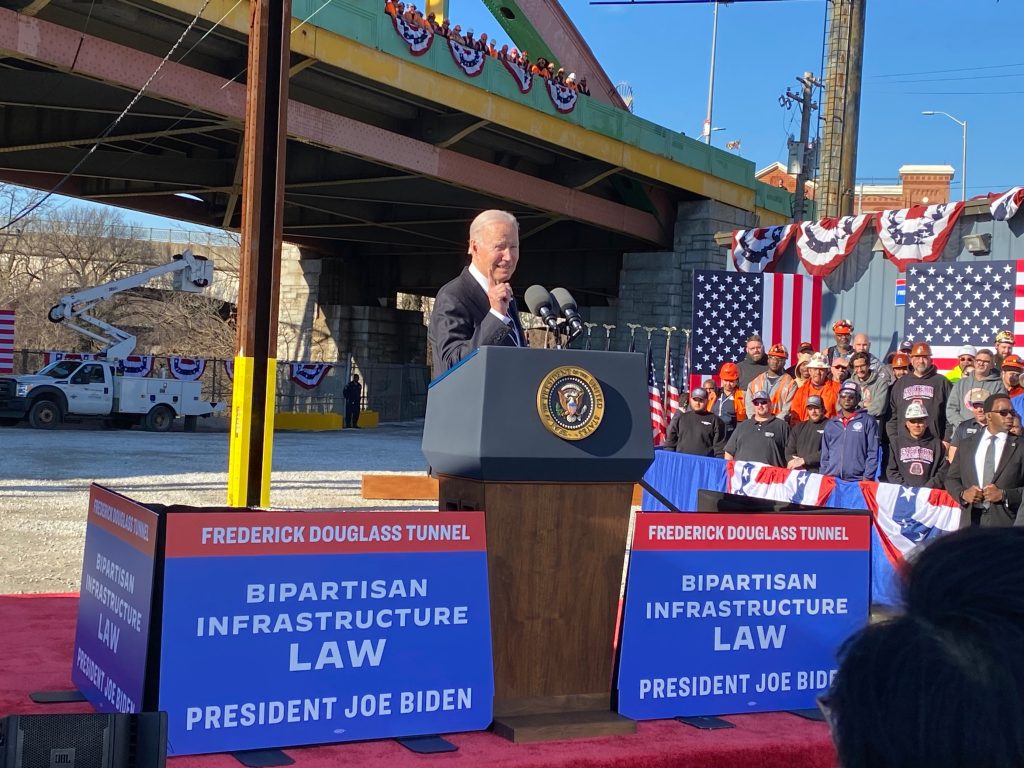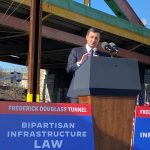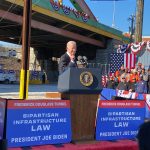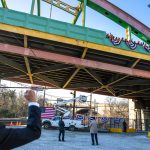 The President Joe Biden, the Secretary of the U.S. Department of Transportation, Pete Buttigieg and, Amtrak CEO, Stephen Gardner, together with Maryland officials kicked off the agreement with the State of Maryland for the first phase of Baltimore and Potomac Tunnel project.
The President Joe Biden, the Secretary of the U.S. Department of Transportation, Pete Buttigieg and, Amtrak CEO, Stephen Gardner, together with Maryland officials kicked off the agreement with the State of Maryland for the first phase of Baltimore and Potomac Tunnel project.
The project covering the construction of the new two tubes tunnel – the Frederick Douglass Tunnel – will address the largest rail bottleneck on the Northeast Corridor between Washington, D.C. and New Jersey.
“Replacing this Civil War-era B&P tunnel will nearly triple train capacity on this critical section of the Northeast Corridor for the nine million annual Amtrak and MARC customers who rely on this vital connection,” Amtrak CEO said.
Maryland intends to commit USD 450 million in state funding to support this major infrastructure project, which includes the construction of the new Frederick Douglass Tunnel. These funds, combined with Amtrak’s intended commitment of approximately USD 750 million, put the project closer to achieving full funding under the Federal Railroad Administration’s Federal-State Partnership for Intercity Passenger Rail Grant Programme.
Once work is complete, service reliability, capacity and speed will increase from 48 km/h to up to 180 km/h, saving commuters time on what is currently the largest rail bottleneck between Washington, D.C. and New Jersey.
“We will continue to work closely with all of our partners to advance the Frederick Douglass Tunnel and support the region with innovative transportation solutions. This critical infrastructure project will improve both passenger and commuter rail for Marylanders,” Paul J. Wiedefeld, Acting Secretary of the Maryland Department of Transportation said.
At nearly 150 years old, the Baltimore and Potomac Tunnel is Amtrak’s oldest tunnel on the Northeast Corridor between Washington and New Jersey and a single point of failure for the 9 million Amtrak and Maryland Area Commuter (MARC) passengers who rely on it annually.
The 2.2 km tunnel, connecting Baltimore to Washington, D.C., suffers from a variety of age-related issues such as excessive water infiltration, a deteriorating structure and delays that impact more than 10% of weekday trains.
The programme is comprised of several investment projects to construct new bridges, rail systems and track, an ADA-accessible West Baltimore MARC station and the new Frederick Douglass Tunnel, which will include two new high-capacity tubes for electrified passenger trains.
When the programme is complete, speed and capacity improvements will help enable service growth and eliminate nearly 7 hours of train delay for the average weekday. Capacity of the tunnel is expected to nearly triple and will allow increased speed. By one estimate, replacing the tunnel would save nearly 450,000 hours per year for MARC and Amtrak customers.
The total cost of the program is expected to be USD 6 billion, of which Bipartisan Infrastructure Law funding could contribute up to USD 4.7 billion. While the project received USD 44 million through the American Reinvestment and Recovery Act for preliminary engineering and permitting, it lacked a viable funding source for construction until the Bipartisan Infrastructure Law.
Share on:







